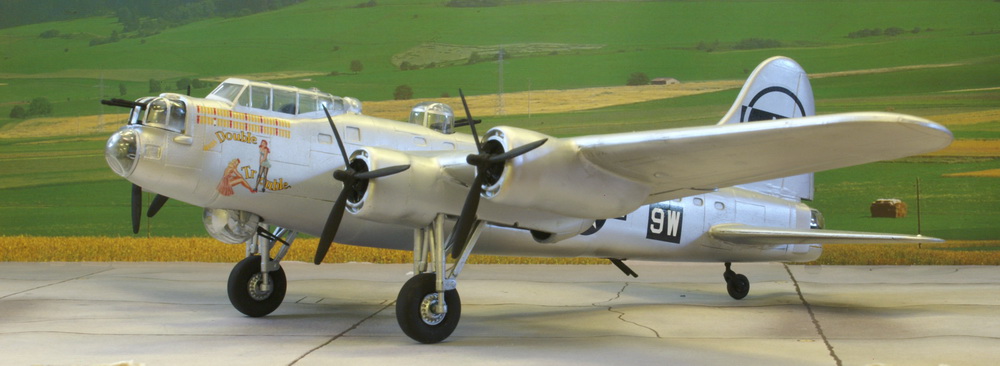


Curtiss B-20D VultureAs the was in Europe broke out US military observers were keen to learn from the early British experiences. The US was convinced that they would be drawn into the conflict sooner or later and they wanted to be as well prepared as they could be. The various services sent officers to the UK to learn first hand what was needed to fight Nazi Germany. The US Army Air Corps also sent a number of observers. One of the things they learnt was that lightly armed bombers didn't stand a chance against modern fighters. This led to doubts about the performance of the Boeing B-17, an aircraft that the Air Corps had so far had high hopes for. Fears that the B-17 wouldn't be able to survive in a hostile environment led to a request to the aircraft manufacturers for a new bomber with heavier armament but greater bomb load.
Boeing responded to this request with an improved B-17, the B-17F, calling it Flying Fortress to indicate the heavy armamant it carried. The heavier armament meant however that the bomb load of the B-17F was reduced as compared to the earlier C and D models. The Curtiss company was traditionally not a manufacturer of heavy bombers, although they did provide the USAAC with the B-2 Condor. In order to profit from the British experiences to the maximum they made contact with the British Avro company. Avro was at the time (1940) involved with the production of the Avro Manchester and the design of the much improved Lancaster. Although talks were held to produce the Lancaster in the USA under licence, Curtiss opted to buy the design of the Lancaster and adopt it for the USAAC, creating a very different aircraft. The resulting aircraft was called the Curtiss B-20 Vulture and the first XB-20 prototype flew in March 1941. The end result of the redesign still retained the Lancaster wing and most of the fuselage but the tail unit was completely redesigned by Curtiss. The aircraft did retain the long bomb bay of the Lancaster enabeling it to carry a far greater bomb load than the revial B-17.
The USAAC felt that the B-17F didn't offer a big enough improvement over the earlier B-17 models and placed an order for 24 B-20A aircraft with Curtiss. The production of the B-17 was halted after 134 aircraft were produced. The XB-20 and also the subsequent A and B models were powered by four 1300hp Allison V-1710 engines. A total of 24 B-20A's and 136 B-20B's were built. The B-20C was a single prototype featuring a pressured cabin but was not produced. The next production variant was the B-20D. The first B-20D first flew in December 1941. The B-20D was powered by the Pratt & Whitney R-2000 Twin Wasp, rated at 1350hp each.
The B-20D was produced in large numbers for the USAAC, a total of 12.000 being produced before production was halted in favor of the Curtiss B-44 Buzzard in 1945.
The modelThis is a Revell Lancaster with parts from an old Frog B-17 kit and an Airfix Liberator kit.
|
Last updated: 03/10/2011